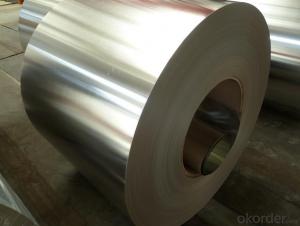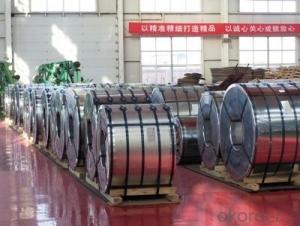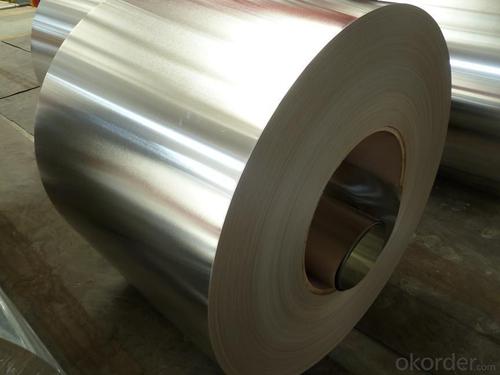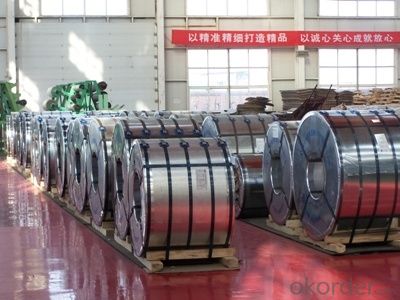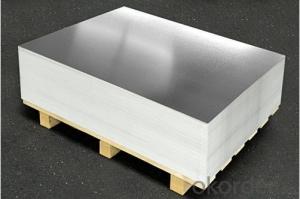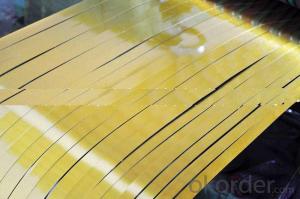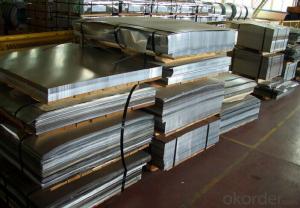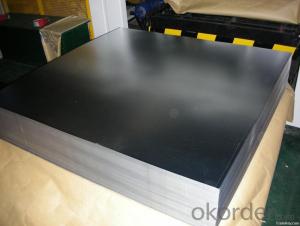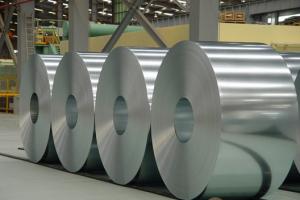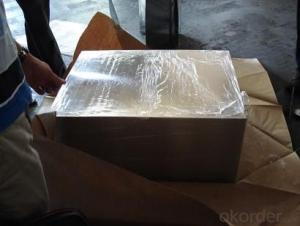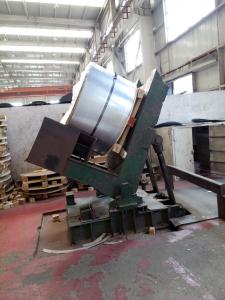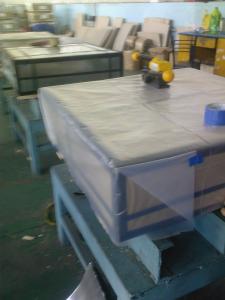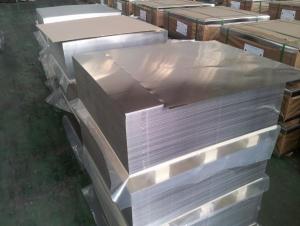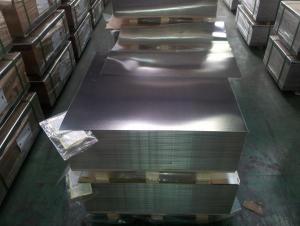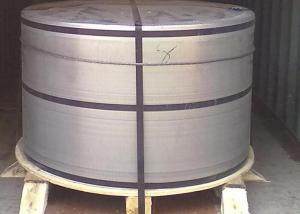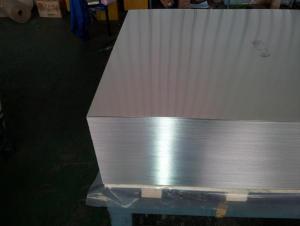Tinplate Sheets for Chemical Cans Use with 0.19mm thickness
- Loading Port:
- Shanghai
- Payment Terms:
- TT or LC
- Min Order Qty:
- 25 m.t.
- Supply Capability:
- 1000 m.t./month
OKorder Service Pledge
OKorder Financial Service
You Might Also Like
1.Structure of Tinplate Sheets for Chemical Cans Use with 0.19mm thickness Description
Tinplate Sheets for Food Cans Use with 0.18mm thickness is one of the metal packing materials, which is widely used for making painting cans ,chemical package cans , electrical cable ,battery and metal printing etc.
2. Main Features of the Tinplate Sheets for Chemical Cans Use with 0.19mm thickness
Steady and high quality
Fast shipment
Good experience for export work
For the surface, Plate uniform in thickness,uniform and smooth tin coating, without flaws,rusts,scratch,wave,nick of tin coating etc.
Thin Thickness
3.Tinplate Sheets for Chemical Cans Use with 0.19mm thickness Images
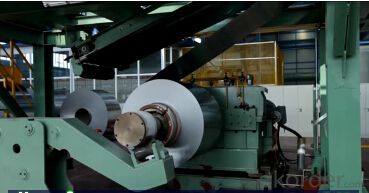
4. Tinplate Sheets for Chemical Cans Use with 0.19mm thicknessSpecification
Standard : GB2520-2000 ,JIS G3303
Steel type : SPCC
Coating : 2.8/2.8
Surface: Bright, Stone ,
Thickness:0.19
Width :600MM~1000MM
Temper : T1~T5
Package: tinplate wrapped completely with an inner cover of plastic or waterproof papers with vorners protected with metal angels.
5.FAQ of Tinplate Sheets for Chemical Cans Use with 0.19mm thickness
A. What is the package of tinplate? (Referred as below)
For sheets, thin plastic film + rust-proof paper + metallic cover + metallic angles+ steel band strips + fumigated wooden pallet.
For coil, thin plastic film + rust proof paper + metallic cover + steel band strips + fumigated wooden pallet
B. The surface of tinplate could you supply?
Stone finish, Bright finish, Matte finish, Silver finish
C. What is the tin coating you can produce?
We can produce E2.8/2.8,D2.8/5.6 and E5.6/5.6 etc.
D. Can you provide other thickness?
Yes, we can provide, normally 0.16mm-0.5mm.
- Q: What are the different coating options for tinplate?
- Some different coating options for tinplate include tin-free steel (TFS), electrolytic tinplate (ETP), tin-free steel with lacquer, and organic coatings such as epoxy or polyester. These coatings provide various levels of corrosion resistance and can be chosen based on the specific requirements of the application.
- Q: How does tinplate contribute to the safety and integrity of packaged products?
- Tinplate contributes to the safety and integrity of packaged products in several ways. Firstly, tinplate is highly resistant to corrosion, protecting the packaged products from exposure to moisture and other potentially harmful elements. This corrosion resistance ensures that the packaging remains intact, preventing any leakage or contamination of the product. Additionally, tinplate has excellent barrier properties, which means it effectively blocks out oxygen, light, and other external factors that could cause spoilage or degradation of the packaged goods. Furthermore, tinplate provides a strong and sturdy structure for packaging, ensuring that it can withstand transportation and handling without compromising the integrity of the product. Overall, tinplate's properties make it a reliable and protective material for packaging, thereby contributing to the safety and preservation of packaged products.
- Q: How does tinplate handle exposure to light?
- Tinplate is not affected by exposure to light, as it is a durable material that does not undergo any chemical changes or degradation when exposed to light.
- Q: What are the main factors influencing the profitability of tinplate manufacturers?
- The main factors influencing the profitability of tinplate manufacturers are the cost of raw materials, such as tin and steel, as well as the price at which the finished tinplate products can be sold. Other factors include production efficiency, economies of scale, competition within the industry, and the overall demand for tinplate in various sectors like packaging, construction, and automotive. Additionally, factors like government regulations, technological advancements, and environmental sustainability practices can also impact the profitability of tinplate manufacturers.
- Q: Can tinplate be used for construction applications?
- Yes, tinplate can be used for construction applications. It is often utilized for roofing, siding, ceilings, and other structural components due to its durability, corrosion resistance, and lightweight properties.
- Q: Can tinplate be used for furniture?
- Yes, tinplate can be used for certain furniture applications. It is commonly used for manufacturing metal cabinets, storage containers, and decorative accents on furniture pieces. However, it is not typically used as the primary material for furniture due to its limited strength and durability compared to other materials such as wood, plastic, or metal alloys.
- Q: Can tinplate be used for packaging fragile items?
- Yes, tinplate can be used for packaging fragile items. Tinplate is a strong and durable material that provides excellent protection against damage. Its resistance to impact and ability to withstand pressure make it suitable for packaging fragile items safely. Additionally, tinplate's ability to resist corrosion ensures that the packaging remains intact and protects the fragile items throughout the shipping or storage process.
- Q: Can tinplate be used for ammunition?
- Yes, tinplate can be used for ammunition. Tinplate is a type of steel plated with a thin layer of tin, which provides corrosion resistance and durability. It is commonly used for manufacturing metal cans, including ammunition containers.
- Q: How does tinplate handle extreme weather conditions?
- Tinplate is known for its excellent resistance to extreme weather conditions. It is highly durable and can withstand harsh temperatures, humidity, and exposure to sunlight without significant degradation. Its protective coating prevents rusting and corrosion, making it a reliable choice for outdoor applications.
- Q: Can tinplate be used for petrochemical packaging?
- Yes, tinplate can be used for petrochemical packaging. Tinplate is a type of steel coated with a thin layer of tin, which provides excellent resistance against corrosion. This makes it suitable for packaging materials that come into contact with petrochemical products, as it helps protect the contents from degradation and contamination. Additionally, tinplate is also known for its durability and ability to withstand high temperatures, making it a reliable choice for petrochemical packaging.
Send your message to us
Tinplate Sheets for Chemical Cans Use with 0.19mm thickness
- Loading Port:
- Shanghai
- Payment Terms:
- TT or LC
- Min Order Qty:
- 25 m.t.
- Supply Capability:
- 1000 m.t./month
OKorder Service Pledge
OKorder Financial Service
Similar products
Hot products
Hot Searches
Related keywords
